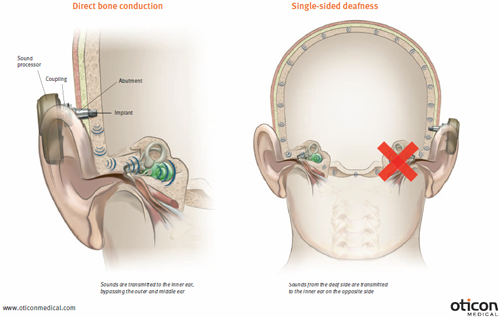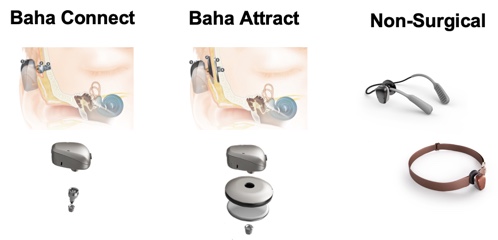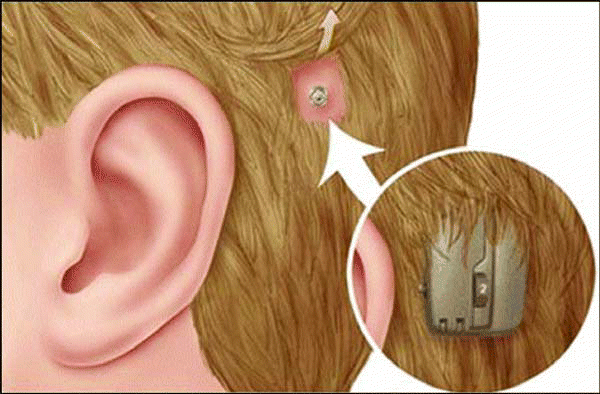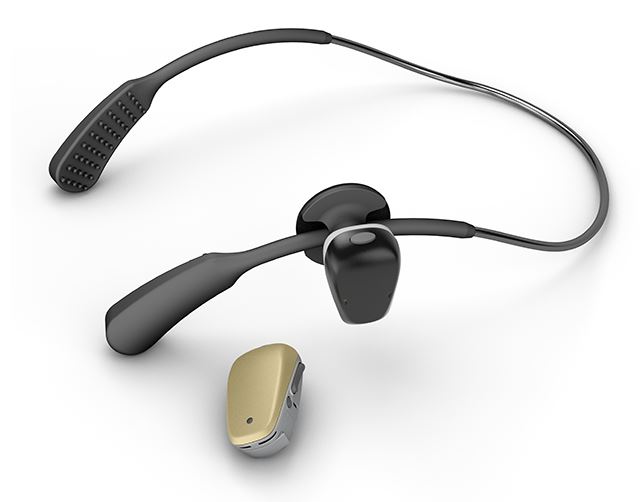They are more expensive than traditional hearing. BAHAs are primarily used for people who have conductive hearing losses and people with single-sided deafness unilateral hearing loss.
 Bone Anchored Hearing Aids Tampa Bay Hearing
Bone Anchored Hearing Aids Tampa Bay Hearing
A bone-anchored auditory device or bone-anchored auditory implant should always be presented as a helpful option to the patient.

Bone anchored hearing aid reviews. Even people with more severe levels of hearing loss and SSD can benefit from the technology not just those with pure conductive hearing loss More people expected to try bone conduction hearing. Good good good good good. Added the indication for soft headbands for children.
It transfers sound by bone vibration directly to the cochlea bypassing the outer and the middle ear. This means it is useful for conductive and mixed hearing losses. Baha is used to improve hearing in patients with chronic ear infections congenital external auditory canal atresia when the ear canal does not develop or one-sided deafness who cannot benefit from regular hearing.
We dont think that its necessary to do in this case. A bone conduction hearing device is an alternative to a regular hearing aid for those with problems in their outer or middle ears. A bone conduction hearing.
Simply stick the ADHEAR adapter behind your ear click on the audio processor and start hearing instantly. ADHEAR is so comfortable to wear you wont want to take it off at the end of the day. Bone-anchored hearing systems based on the concept of osseointegration and the use of bone-conduction hearing have benefited thousands of patients both adult and child with conductive or mixed hearing loss and single sided deafness.
As a trial device the discreet Baha SoundArc has an opportunity to make testing bone conduction more appealing. Oticon Medical Ponto Bone Anchored Hearing Aids. Reviews Revisions and Approvals Date Approval Date.
An implantable bone-conduction bone-anchored hearing aid may be considered medically necessary as an alternative to an air-conduction CROS hearing aid in patients 5 years of age and older with single-sided sensorineural deafness and normal hearing in the other ear. These devices have been in use since 1977 in Europe and was been FDA approved since 1996 for conductive and mixed hearing loss. A bone anchored hearing aid BAHA is similar to other hearing aids but instead of being inserted into the ear canal or held behind the ear it is attached to a soft band worn on the head or fixed to a metal implant inserted into the skull.
The decision or choice to wear a processor should always be left up to the patient or to. Whats more ADHEAR is the only non-implanted bone conduction device that doesnt put pressure on your skin. Bone anchored hearing aids offer amplification without having a.
Although conventional demo devices such as a. For some people they hear that they may have to have some form of surgery and they might back away from it. This page from Great Ormond Street Hospital GOSH describes the type of BAHAs used at GOSH what is involved in fitting them and what.
A bone anchored hearing aid sounds more dramatic than it is. The surgical technique is simple yet widely varied and the results are consistent and very good at both hearing improvement as. The BAHA is simple to install and has very few side effects.
In individuals who are unable to hear using air conduction either due to a. In normal hearing sound may be transmitted to the inner ear both by air through the external ear canal or through the bones of the skull. A Bone Anchored Hearing Aid BAHA is a type of hearing aid which uses bone conduction of sound to deliver better hearing.
In fact most patients dont have to deal with side effects period. Sometimes they are used for people who cannot wear traditional types of hearing aids because of chronic infection malformed ear canals or ears or absent ears. A bone anchored hearing aid is an alternative to a regular hearing aid for those with problems in their outer or middle ears.
A bone anchored hearing aid relies on a working cochlea to send sound to the brain. The pure tone average air. The Bone-anchored hearing aid system BAHA is a hearing aid which uses the principle of bone conduction.
Models Reviews Prices and Videos. Sophono Alpha 2 MPO ePlus. Bone-Anchored Hearing Aid.
The bone anchored hearing devices work by directly stimulating the inner ear through the bone. The FDA approved its use for one-sided deafness in 2002. Bone anchored hearing aids BAHA is the brand name of a manufacturers called Cochlear device.
An audiologist ENT or bone-anchored auditory device manufacturer can help suggest a model that is best suited for your hearing loss needs.
 Trends In Bone Conduction Considerations For Treating Both Ears George Cire Bone Conduction Implants And Middle Ear Devices 25238
Trends In Bone Conduction Considerations For Treating Both Ears George Cire Bone Conduction Implants And Middle Ear Devices 25238
 Cochlear S Baha Surgically Implanted Hearing Aid Review By Gardner Audiology Gardner Audiology
Cochlear S Baha Surgically Implanted Hearing Aid Review By Gardner Audiology Gardner Audiology
 Bone Anchored Hearing Aid Baha Michigan Ent Allergy Audiology
Bone Anchored Hearing Aid Baha Michigan Ent Allergy Audiology

 The Ponto Bone Anchored System The Right Choice For Pediatrics Mary Humitz Bone Conduction Implants And Middle Ear Devices 17335
The Ponto Bone Anchored System The Right Choice For Pediatrics Mary Humitz Bone Conduction Implants And Middle Ear Devices 17335
 Bone Anchored Hearing Aid Oticon Ponto Post Surgery Explanation And Unboxing Youtube
Bone Anchored Hearing Aid Oticon Ponto Post Surgery Explanation And Unboxing Youtube
 Baha Ponto And Sophono Bone Anchored Hearing Aid
Baha Ponto And Sophono Bone Anchored Hearing Aid

 Bone Anchored Hearing Aids Offer Viable Alternative To Standard Devices Enttoday
Bone Anchored Hearing Aids Offer Viable Alternative To Standard Devices Enttoday
 Bone Anchored Hearing Aid An Evidence Based Analysis Abstract Europe Pmc
Bone Anchored Hearing Aid An Evidence Based Analysis Abstract Europe Pmc
 Bone Anchored Hearing Aids Why When Pros And Cons
Bone Anchored Hearing Aids Why When Pros And Cons
 Bone Anchored Hearing Systems What You Need To Know
Bone Anchored Hearing Systems What You Need To Know
 Bone Conduction Hearing Devices Hearing Implants
Bone Conduction Hearing Devices Hearing Implants
 Bone Anchored Hearing Aid An Overview Sciencedirect Topics
Bone Anchored Hearing Aid An Overview Sciencedirect Topics
No comments:
Post a Comment
Note: Only a member of this blog may post a comment.